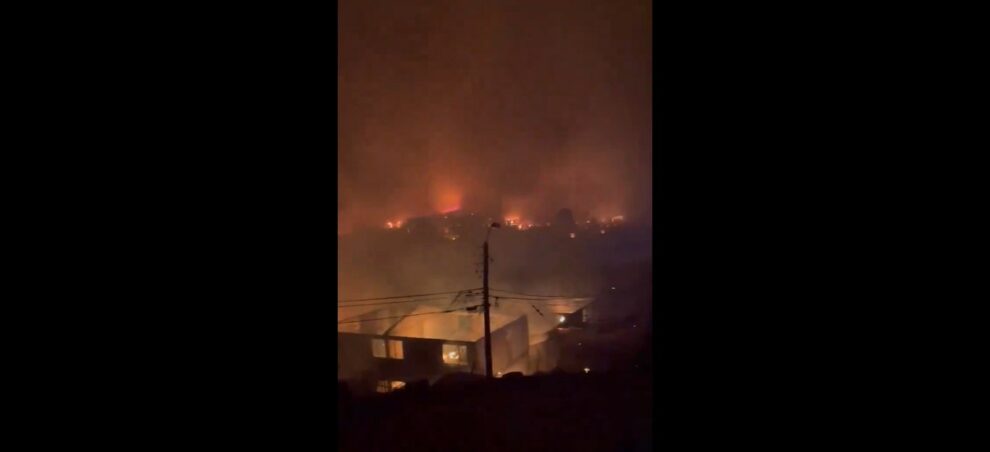Once a lush oasis bursting with native and exotic plants, Chile’s biggest botanical garden has been left greyed and charred after a wildfire blazed through last week, also killing a nursery manager and members of her family.
The Vina Del Mar National Botanical Garden was caught up in the raging inferno that killed at least 131 people and destroyed entire neighborhoods in the coastal Valparaiso region, 120 kilometers (75 miles) from Santiago.
Large trees lie on their sides, blackened and uprooted, the hills around the gardens covered in ash.
The 400-hectare (990-acre) gardens in the seaside town of Vina del Mar have always been seen as “a green lung, but now it looks more like a smoker’s lung,” said park director Alejandro Peirano.
The site, first designed by French architect Georges Dubois in 1918, was home to 1,300 species of plants and trees, including native and exotic ferns, members of the myrtle family, mountain cypresses, Chilean palm and Japanese cherry trees.
Peirano described the fire as fierce and erratic, jumping from tree to tree, and razing much of the gardens in an hour.
“Being optimistic, I say that five hectares were saved, the rest burned,” he said.
The grounds were also home to marsupials, grey foxes, birds, and the Chilean ferret, which were likely impacted.
– Hiroshima trees survive –
Miraculous survivors include the toromiro, a tree with yellow flowers from the remote Easter Island that is extinct in the wild but grows in some botanical gardens and private collections from seeds collected decades ago.
“At some point we received the seed and we reproduced it here and we have a beautiful collection. The fire passed over it, so what could have been the most painful loss, was not,” says the director.
Also unscathed were trees from the Garden of Peace, grown from the seeds of trees that survived the 1945 atomic bomb in Hiroshima, that have been shared around the world by Japan.
Although the trees were “tanned by the heat, they will remain standing,” said Peirano, who has held the job for a decade and managed 60 workers.
He and several other garden employees live on the site, but managed to flee the flames.
One of them, nursery manager Patricia Araya, died in the fire alongside her mother and two granddaughters. The 60-year-old was due to remarry this week.
Daniela Gutierrez, 32, who supervises the collection of native cacti, described her as having a “green thumb, because whatever she planted, germinated.”
The botanical garden had previously been damaged by major fires in 2013, 2018, and 2022, but Peirano described the weekend inferno as the most violent of all.
He suspects it was started deliberately, which authorities are investigating.
The garden hopes to re-open to the public in a few weeks, but it is expected to take five years to recover from the damage.
If another fire of this magnitude happens in that time, “we will disappear as a botanical garden,” said Peirano.
